 |
 |
 |
 |
 |
 |
| |
 |
|
 |
 |
 |
  |
  |
 |
 |
 |
 |
|
|
 |
|
 |
 |
 |
BUILDING |
 |
|
 |
|
 |
 |
 |
| |
 |
| 
 |
Serpentine Gallery Pavilion
|
|
 |
 |
 |
 |
DESIGNER |
 |
|
|
 |
|
 |
 |
 |
| |
 |
|
 |
 |
 |
 |
DESCRIPTION |
 |
|
|
 |
|
 |
 |
 |
|
|
 |
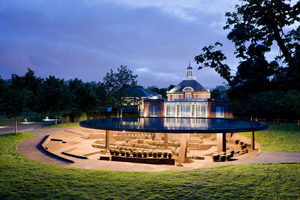 The design team responsible for the celebrated Beijing National Stadium, which was built for the 2008 Olympic Games, comes together again in London in 2012 for the Serpentine’s acclaimed annual commission, being presented as part of the London 2012 Festival, the culmination of the Cultural Olympiad. The Pavilion is Herzog & de Meuron and Ai Weiwei’s first collaborative built structure in the UK. The design team responsible for the celebrated Beijing National Stadium, which was built for the 2008 Olympic Games, comes together again in London in 2012 for the Serpentine’s acclaimed annual commission, being presented as part of the London 2012 Festival, the culmination of the Cultural Olympiad. The Pavilion is Herzog & de Meuron and Ai Weiwei’s first collaborative built structure in the UK.
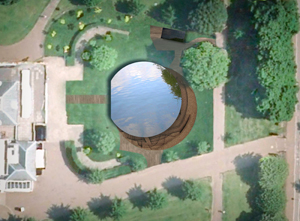 This year’s Pavilion will take visitors beneath the Serpentine’s lawn to explore the hidden history of its previous Pavilions. Eleven columns characterising each past Pavilion and a twelfth column representing the current structure will support a floating platform roof 1.4 metres above ground. The Pavilion’s interior will be clad in cork, a sustainable building material chosen for its unique qualities and to echo the excavated earth. Taking an archaeological approach, the architects have created a design that will inspire visitors to look beneath the surface of the park as well as back in time across the ghosts of the earlier structures. This year’s Pavilion will take visitors beneath the Serpentine’s lawn to explore the hidden history of its previous Pavilions. Eleven columns characterising each past Pavilion and a twelfth column representing the current structure will support a floating platform roof 1.4 metres above ground. The Pavilion’s interior will be clad in cork, a sustainable building material chosen for its unique qualities and to echo the excavated earth. Taking an archaeological approach, the architects have created a design that will inspire visitors to look beneath the surface of the park as well as back in time across the ghosts of the earlier structures.
The Serpentine Gallery Pavilion will operate as a public space and as a venue for Park Nights, the Gallery’s high-profile programme of public talks and events. Connecting to the archaeological focus of the Pavilion design, Park Nights will culminate in October with the Serpentine Gallery Memory Marathon, the latest edition of the annual Serpentine Marathon series conceived by Hans Ulrich Obrist, now in its seventh year. The Marathon series began in 2006 with the 24-hour Serpentine Gallery Interview Marathon; followed by the Experiment Marathon in 2007; the Manifesto Marathon in 2008; the Poetry Marathon in 2009, the Map Marathon in 2010 and the Garden Marathon in 2011. |
|
 |
 |
 |
|
 |
|
| Herzog & de Meuron and Ai Weiwei said |
 |
|
 |
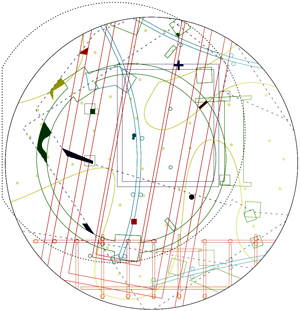 “Every year since 2000, a different architect has been responsible for creating the Serpentine Gallery’s summer Pavilion for Kensington Gardens. That makes eleven Pavilions so far, our contribution will be the twelfth. So many Pavilions in so many different shapes and out of so many different materials have been conceived and built that we tried instinctively to sidestep the unavoidable problem of creating an object, a concrete shape. “Every year since 2000, a different architect has been responsible for creating the Serpentine Gallery’s summer Pavilion for Kensington Gardens. That makes eleven Pavilions so far, our contribution will be the twelfth. So many Pavilions in so many different shapes and out of so many different materials have been conceived and built that we tried instinctively to sidestep the unavoidable problem of creating an object, a concrete shape.
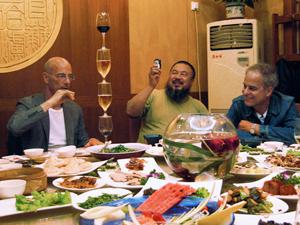 “Our path to an alternative solution involves digging down some five feet into the soil of the park until we reach the groundwater. There we dig a waterhole, a kind of well, to collect all of the London rain that falls in the area of the Pavilion. In that way we incorporate an otherwise invisible aspect of reality in the park – the water under the ground – into our Pavilion. As we dig down into the earth we encounter a diversity of constructed realities such as telephone cables and former foundations. Like a team of archaeologists, we identify these physical fragments as remains of the eleven Pavilions built between 2000 and 2011. Their shape varies: circular, long and narrow, dots and also large, constructed hollows that have been filled in. These remains testify to the existence of the former Pavilions and their greater or lesser intervention in the natural environment of the park. “Our path to an alternative solution involves digging down some five feet into the soil of the park until we reach the groundwater. There we dig a waterhole, a kind of well, to collect all of the London rain that falls in the area of the Pavilion. In that way we incorporate an otherwise invisible aspect of reality in the park – the water under the ground – into our Pavilion. As we dig down into the earth we encounter a diversity of constructed realities such as telephone cables and former foundations. Like a team of archaeologists, we identify these physical fragments as remains of the eleven Pavilions built between 2000 and 2011. Their shape varies: circular, long and narrow, dots and also large, constructed hollows that have been filled in. These remains testify to the existence of the former Pavilions and their greater or lesser intervention in the natural environment of the park.
“All of these foundations will now be uncovered and reconstructed. The old foundations form a jumble of convoluted lines, like a sewing pattern. A distinctive landscape emerges out of the reconstructed foundations which is unlike anything we could have invented; its form and shape is actually a serendipitous gift. The three-dimensional reality of this landscape is astonishing and it is also the perfect place to sit, stand, lie down or just look and be amazed. In other words, the ideal environment for continuing to do what visitors have been doing in the Serpentine Gallery Pavilions over the past eleven years – and a discovery for the many new visitors anticipated for the London 2012 Olympic Games.
“On the foundations of each single Pavilion, we extrude a new structure (supports, walls) as load-bearing elements for the roof of our Pavilion – eleven supports all told, plus our own column that we can place at will, like a wild card. The roof resembles that of an archaeological site. It floats a few feet above the grass of the park, so that everyone visiting can see the water on it, its surface reflecting the infinitely varied, atmospheric skies of London. For special events, the water can be drained off the roof as from a bathtub, from whence it flows back into the waterhole, the deepest point in the Pavilion landscape. The dry roof can then be used as a dance floor or simply as a platform suspended above the park.”
Referring to the extensive use of cork in the design, Herzog & de Meuron said: "Cork is a natural material with wonderful haptic and olfactory qualities with the versatility to be carved, cut, shaped and formed, as demonstrated in many historical examples of cork architectural models." |
|
 |
 |
 |
|
 |
|
| Arup |
 |
|
 |
Engineering firm Arup will collaborate with Herzog & de Meuron and Ai Weiwei to realise the 2012 Serpentine Gallery Pavilion. The Arup team, led by Stuart Smith, will provide all engineering and specialist technical advice for the project. Director Stuart Smith said “This year’s Serpentine Pavilion has allowed us as a design team to build on the strong working relationship we originally forged designing the National Stadium for the Beijing Olympics. With London as the centre of the Cultural Olympiad, it has been a pleasure and privilege working together on creative design and engineering innovation to literally delve deep into the history of past Pavilions creating an exciting living experience for visitors to enjoy.”
» Buldings by Arup on AR
» Structural consulting by Arup on AR
|
|
 |
 |
 |
|
 |
|
| Serpentine Gallery Pavilion History |
 |
|
 |
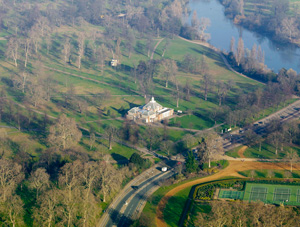 There is no budget for the Serpentine Gallery Pavilion commission. It is paid for by sponsorship and sponsorship help-in-kind, as well as the sale of the finished structure which does not cover more than 40% of its cost. The Serpentine Gallery collaborates with a range of companies and individuals whose support makes it possible to realise the Pavilion. The Serpentine Gallery Pavilion commission is an ongoing programme of temporary structures by internationally acclaimed architects and designers. The series is unique worldwide and presents the work of an international architect or design team who has not completed a building in England at the time of the Gallery’s invitation. There is no budget for the Serpentine Gallery Pavilion commission. It is paid for by sponsorship and sponsorship help-in-kind, as well as the sale of the finished structure which does not cover more than 40% of its cost. The Serpentine Gallery collaborates with a range of companies and individuals whose support makes it possible to realise the Pavilion. The Serpentine Gallery Pavilion commission is an ongoing programme of temporary structures by internationally acclaimed architects and designers. The series is unique worldwide and presents the work of an international architect or design team who has not completed a building in England at the time of the Gallery’s invitation.
The Pavilion architects to date are:
|
|
 |
 |
 |
|
 |
|
| Serpentine Gallery Pavilion Commission |
 |
|
 |
The Serpentine’s Pavilion commission, conceived in 2000 by the Gallery’s Director Julia Peyton-Jones, has become an international site for architectural experimentation and has presented projects by some of the world’s greatest architects. Each Pavilion is sited on the Gallery’s lawn for three months and the immediacy of the commission – a maximum of six months from invitation to completion – provides a unique model worldwide.
|
|
 |
 |
 |
 |
 |
 |
 |
VIDEO |
 |
|
|
 |
|
 |
 |
 |
| |
 |
|
 |
 |
 |
 |
LOCATION |
 |
|
|
 |
|
 |
 |
 |

|
 |

|

|
 |

|
|
|
 |
|
Website |
|
 |
|
 |
 |
 |
 |
MAP |
 |
|
|
 |
|
 |
 |
 |
| |
 |
|
 |
 |
 |
 |
|
TYPOLOGY |
 |
|
|
 |
|
 |
 |
 |
|
|
 |
ARCHITECTURE | Commercial buildings
Bars, cafeterias
Urban equipment and structures for public areas
Structures for public areas
Other architectural structures
Pavilions, kiosks, facilities
| |
 |
 |
 |
 |
CHRONOLOGY |
 |
|
|
 |
|
 |
 |
 |
Project |
 |
|
 |
| 
 |
2012 - 2012
|
|
Realisation |
 |
|
 |
| 
 |
2012 - 2012 |
|
 |
 |
 |
 |
BIBILIOGRAPHIC REFERENCES |
 |
|
|
 |
|
 |
 |
 |
|
 |
| "Herzog & de Meuron and Ai Weiwei. 2012", Serpentine Gallery Pavilions. Visions of new architecture. 2000-2013, supplement A+U. Architecture and Urbanisme 9/2013, september 2013, pp. 68-71 |
|
|
| Johnny Tucker, "What lies beneath", Blueprint 317, august 2012, pp. 42-46 |
|
|
| Douglas Murphy, "Serpentine Pavilion. Herzog & de Meuron with Ai Weiwei", Icon 110, august 2012, pp. 45-46 |
|
|
| Laura Mirviss, "Serpentine Gallery Pavilion. Herzog & de Meuron with Ai Weiwei", Architectural Record 8/2012, august 2012, p. 160 |
|
|
| Jacques Herzog, Pierre de Meuron, Ai Weiwei, "Serpentine Gallery Pavilion 2012", A+U. Architecture and Urbanisme 503, august 2012 [London 2012 Olympics], pp. 8-21 (8-49) |
|
|
| "Serpentine Gallery, Kensington Gardens, Londres / This year's Serpentine Pavilion in Kensington Gardens, London", L'Architecture d'Aujourd'hui 390, juillet/july 2012, pp. 11-13 |
|
|
| Heide Wessely, "Auf den Spuren der Vorganger - der Serpentine-Pavillon 2012 in London / In the footsteps of predecessors - the 2012 Serpentine Pavilion in London", Detail 7-8/2012, juli-august/july-august 2012, p. 754 |
|
|
| Owen Hatherley, "Dodgy foundations. Ai Weiwei and Herzog & de Meuron", Architectural Review 1385, july 2012, pp. 83-84 |
|
|
| Asad Syrkett, Jenna M. McKnight, "London underground", Architectural Record 6/2012, june 2012, p. 23 |
|
|
| Mike Tonkin, "The twelfth annual Serpentine Gallery Pavilion plays games with visitors and the site but its designers' intentions are deeply serious", Architecture Today 229, june 2012, pp. 54-59 |
|
 |
 |
 |
 |
 |
 |
 |
CLIENT |
 |
|
|
 |
|
 |
 |
 |
| |
 |
|
 |
 |
 |
 |
STRUCTURES |
 |
|
|
 |
|
 |
 |
 |
| |
 |
|
 |
 |
 |
 |
STAFF |
 |
|
|
 |
|
 |
 |
 |
|
 |
|
Structural consultant |
 |
|
 |
 |
 |
 |
ANNOTATIONS |
 |
|
|
 |
|
 |
 |
 |
| |
 |
|
 |
 |
 |
 |
CREDITS |
 |
|
|
 |
|
 |
 |
 |
| |
 |
Drawings © 2012, by Herzog & de Meuron and Ai Weiwei
Photos © Iwan Baan
Text and images courtesy by Serpentine Gallery Pavilion, London
|
|
 |
  |
 |
|
|